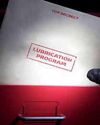
"Captain Ross," the colonel yelled as he held up a freshly unearthed piece of metal. "What am I looking at?" "Colonel, that's part of the right rear strake," I told him while adjusting my chemical warfare gear.
One hundred miles behind the Republican Guard during the Gulf War was not aplace you could hurry to get your chem-gear on if you had to. Not for an Air Force officer, very unaccustomed to being this close to the enemy or to carrying an M-16.
"How do you know?" the colonel asked while examining an almost indistinguishable hunk of junk.
"Because," I said, "I know every single part of this airplane."
The airplane was a crashed Air Force asset. currently spread out over two miles of unforgiving wasteland that was now ours to investigate. We had about eight hours on the ground before the Navy Seals came back for us. One hundred miles behind enemy lines, a lost aircraft, two miles of scattered and charred evidence, wearing full chem gear, five Air Force officers (with guns), eight hours on the clock, and we had to figure out why this plane crashed. No pressure.
We didn't have a lot of equipment, but what we did have was incredible analytical skills.
From that spot and piece of airframe, we could reconstruct exactly how the aircraft impacted the ground and came apart. An entire investigation was conducted. reported, and filed and advancements in aviation warfare were made because of the absolute recognition of what we were looking at.
I don't have many great war stories, and even fewer that I might use as a pseudo-segue into maintenance and reliability. But, I hope you'll agree that being certain of what you are looking at can get you closer to a successful conclusion. How certain are you of what you're looking at?
Oil Analysis Results: Three Questions to Ask Yourself
Bu hikaye MACHINERY LUBRICATION INDIA dergisinin January - February 2024 sayısından alınmıştır.
Start your 7-day Magzter GOLD free trial to access thousands of curated premium stories, and 9,000+ magazines and newspapers.
Already a subscriber ? Giriş Yap
Bu hikaye MACHINERY LUBRICATION INDIA dergisinin January - February 2024 sayısından alınmıştır.
Start your 7-day Magzter GOLD free trial to access thousands of curated premium stories, and 9,000+ magazines and newspapers.
Already a subscriber? Giriş Yap

The Secrets For Implementing A Clean lubricant Program
If you could find an investment that guaranteed a return 40 times greater than your initial investment, you probably wouldn't pass it up.

MAINTAIN? REPAIR? REPLACE?
When considering the life of any asset, the question arises: what types of interventions should be planned to keep it operating or to restore operation in the event of its failure?

Engineering Reports Should Be Like Bad Movies
I'm frequently asked to review engineering reports, and I'm continually baffled by how many engineers want to take their readers on a journey instead of getting to the point.

WHY SCHEDULED OIL CHANGES AREN'T ENOUGH TO MITIGATE LUBRICANT CONTAMINATION
There are few problems more insidious or damaging to large industrial machinery than contaminated lubricant.

LUBRICATION CONTAMINATION PREVENTION
How many articles have you read, or seminars listened to, that tout the value of contamination control? If you are like me, they number in the hundreds—if not thousands. One thing about these articles and seminars that bothers me is the word “control”.

LUBRICANT CONTAMINATION PREVENTION AND MITIGATION: A Guide For Maintenance Professionals
Lubricants are essential for the smooth and efficient operation of many types of machinery, from engines and turbines to gears and bearings.

TASK-BASED TRAINING | INSPECTING A SINGLE-POINT LUBRICATOR
A single-point lubricator is a device engineered to attach to a single unit to regularly and automatically deliver a small amount of clean grease or lubricating oil to a specific area.

TOP LEADERSHIP FOCUSES FOR IMPROVED RELIABILITY AND COST REDUCTION
Here’s a scenario that may sound eerily familiar – you have a new reliability initiative.

4 KEY ELEMENTS FOR INTERPRETING AN OIL ANALYSIS REPORT
Years ago, a customer came into my office, visibly upset. He had just received his second oil analysis report for one of his Caterpillar gas engines.

ASTM ENHANCEMENTS TO MICROSCOPIC PARTICLE IDENTIFICATION AND DOCUMENTATION
In 1982, Daniel Anderson published his influential book, \"Wear Particle Atlas\", which describes, sizes, and classifies particles found in oil.